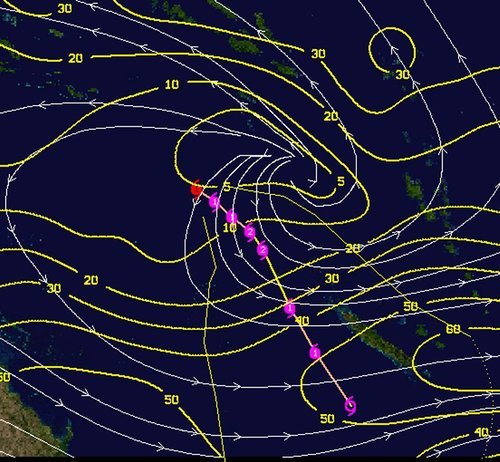Australian Waters Remain Active
This past week, Australia and its surrounding waters have remained active as yet another cyclone has spun up – this time in the Coral Sea. Cyclone Sandy, currently located about 1,200km north-east of Queensland, Australia, is headed in an easterly direction with sustained category one hurricane winds of 120km/h. The cyclone is too far off coast to adversely affect the state of Queensland at this time.

Cyclone Sandy’s route is expected to shift to a south-easterly direction this Saturday but there is much uncertainty as to its destination after the forecasted three-day track. Almost all models agree that Queensland will be spared from this storm, but the island of New Caledonia is still at risk for a direct landfall. This landfall could have a significant impact on New Caledonia as Sandy is expected to continue to strengthen. Before the cyclone weakens, there is a good possibility that it attains a category four level with sustained winds of approximately 180km/h due to sea surface temperatures being very warm (29°C). If the storm does manage to avoid New Caledonia by taking a southerly track, it’s likely that it will die off in the Tasman Sea and not affect populated areas.

Australia’s cyclone season runs from November 1st to April 30th. Currently they are at the peak of the cyclone season. On average, 11 cyclones affect Australia per year and the tally so far this year (including Sandy) has reached 8 cyclones – a normal count for this time of the year.
